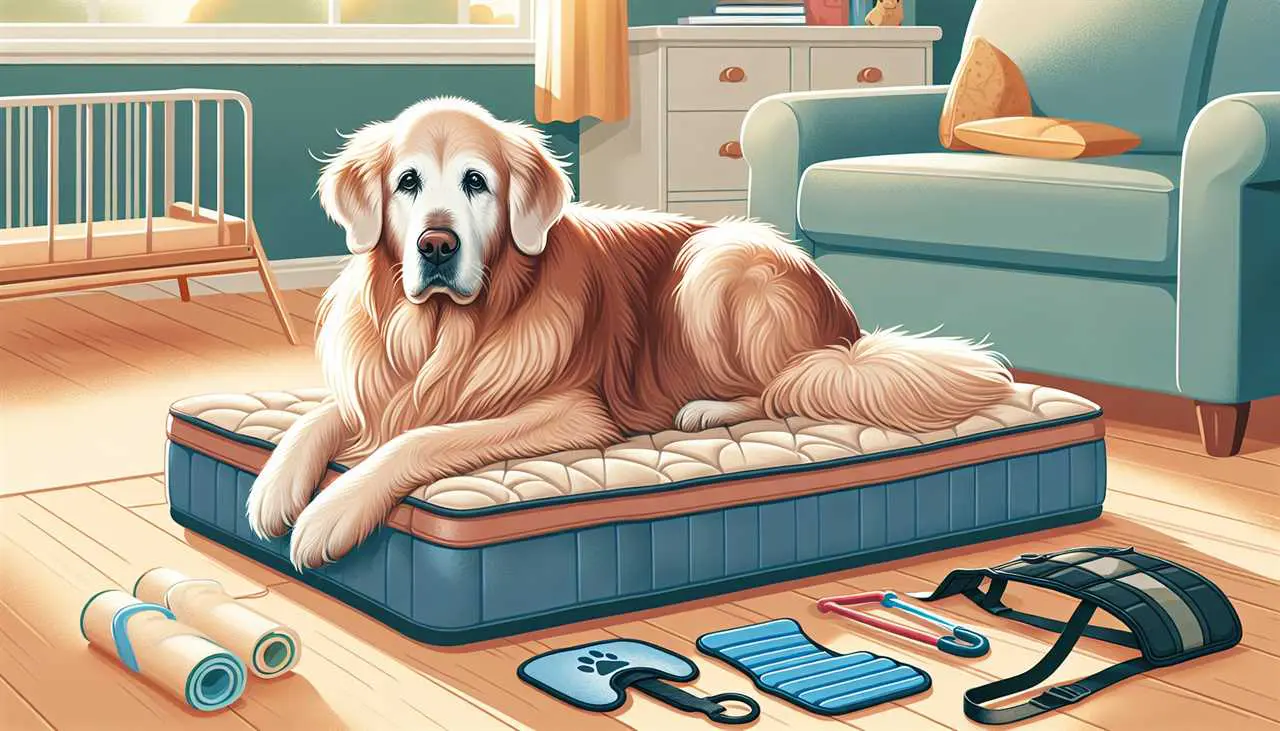Health
Comfort for Aging Pets: Essential Tools for Arthritic Companions
Aging pets often suffer from arthritis, leading to joint pain and reduced mobility. Recognizing symptoms like difficulty moving, limping, or joint swelling is

As our beloved pets age, they often face challenges associated with arthritis, a condition that can significantly impact their quality of life. We understand the importance of providing the best care for our furry companions, especially when they’re dealing with joint pain and reduced mobility. In this comprehensive guide, we’ll explore a range of pet care tools specifically designed to support arthritis sufferers and make their golden years as comfortable as possible.
Understanding Arthritis in Pets
Arthritis is a common condition in older pets, particularly dogs and cats. It causes inflammation in the joints, leading to pain, stiffness, and reduced mobility. As responsible pet owners, it’s our duty to recognize the signs of arthritis and take proactive steps to manage the condition. Some common symptoms include:
• Difficulty getting up or lying down
• Reluctance to climb stairs or jump
• Decreased activity levels
• Limping or favoring certain limbs
• Visible joint swelling
By addressing these issues early on, we can help our pets maintain a good quality of life as they age.
Mobility Aids: Helping Your Pet Stay Active
One of the most effective ways to support arthritic pets is through the use of mobility aids. These tools can make a world of difference in your pet’s daily life, allowing them to move around more freely and comfortably.
Ramps and steps are essential for pets who struggle with jumping or climbing. They can be used to help your dog or cat access furniture, cars, or elevated spaces without putting unnecessary strain on their joints. Look for options with non-slip surfaces and sturdy construction to ensure your pet’s safety.
Support slings and harnesses are invaluable for pets with severe mobility issues. These devices allow you to provide support to your pet’s hind legs or entire body, making it easier for them to walk, climb stairs, or even use the bathroom. When choosing a sling or harness, consider factors such as your pet’s size, the level of support needed, and ease of use for both you and your pet.
Therapeutic Beds: Providing Comfort and Support
A good night’s sleep is crucial for managing arthritis pain, and the right bed can make all the difference. Therapeutic beds designed for arthritic pets offer several benefits:
• Orthopedic foam provides excellent support for joints and helps distribute weight evenly, reducing pressure points.
• Memory foam contours to your pet’s body, offering personalized comfort and support.
• Heated beds can help soothe sore joints and muscles, especially during colder months.
• Waterproof covers are essential for pets with incontinence issues, which can be common in older animals.
When selecting a bed, consider your pet’s size, preferred sleeping position, and any specific needs they may have. Some pets may benefit from a bed with raised edges for head support, while others might prefer a flatter surface for easier access.
Ergonomic Feeders: Making Mealtime Comfortable
Arthritis can make simple tasks like eating and drinking challenging for pets. Ergonomic feeders are designed to address this issue by providing a more comfortable dining experience.
Elevated food and water bowls reduce the need for your pet to bend down, which can be painful for those with neck or back arthritis. Look for bowls with adjustable heights to find the perfect position for your pet.
Non-slip mats under feeding stations prevent bowls from sliding around, making it easier for your pet to eat and drink without frustration.
Slow feeder bowls can be beneficial for pets who tend to eat too quickly, as they encourage slower eating and better digestion. This can be particularly helpful for overweight pets, as maintaining a healthy weight is crucial for managing arthritis.
Joint Supplements: Supporting Overall Joint Health
While not a physical tool, joint supplements play a crucial role in managing arthritis in pets. These supplements typically contain ingredients such as:
• Glucosamine and chondroitin: These compounds help rebuild cartilage and improve joint lubrication.
• Omega-3 fatty acids: Known for their anti-inflammatory properties, these can help reduce joint pain and stiffness.
• MSM (Methylsulfonylmethane): This compound can help reduce inflammation and support joint health.
• Green-lipped mussel: A natural source of glucosamine and chondroitin, as well as omega-3 fatty acids.
It’s important to consult with your veterinarian before starting any supplement regimen, as they can recommend the most appropriate products and dosages for your pet’s specific needs.
Assistive Grooming Tools: Maintaining Hygiene and Comfort
Grooming is an essential aspect of pet care, but it can become challenging for pets with arthritis. Assistive grooming tools can help maintain your pet’s hygiene while minimizing discomfort.
Long-handled brushes and combs allow you to groom your pet without requiring them to stand for extended periods or twist into uncomfortable positions.
Soft, ergonomic grooming gloves can be a gentler alternative to traditional brushes, allowing you to groom your pet while providing a soothing massage.
Raised grooming tables with non-slip surfaces can make grooming sessions more comfortable for both you and your pet, reducing strain on your back and your pet’s joints.
Orthopedic Harnesses: Ensuring Safe and Comfortable Walks
For dogs with arthritis, regular exercise is still important, but it needs to be managed carefully. Orthopedic harnesses are designed to provide support and reduce strain during walks.
Front-clip harnesses can help distribute pressure more evenly across the chest, reducing strain on the neck and back.
Full-body support harnesses are ideal for dogs with severe mobility issues, as they provide support to both the front and back legs.
Padded harnesses with adjustable straps ensure a comfortable fit and prevent chafing, which can be particularly important for dogs with sensitive skin or reduced mobility.
When choosing a harness, consider factors such as your dog’s size, the severity of their arthritis, and any specific areas that need extra support.
Creating a Pet-Friendly Environment
In addition to specific tools and products, it’s important to consider your pet’s overall environment. Here are some tips to make your home more comfortable for an arthritic pet:
• Use non-slip mats or rugs on slippery floors to provide better traction.
• Ensure your pet has easy access to their favorite resting spots.
• Consider installing nightlights to help your pet navigate in the dark.
• Keep your pet’s living area warm and draft-free, as cold can exacerbate joint pain.
• Provide plenty of soft, comfortable resting areas throughout your home.
By implementing these strategies and using the tools we’ve discussed, we can significantly improve the quality of life for our arthritic pets. Remember, every pet is unique, so it may take some trial and error to find the perfect combination of tools and techniques that work best for your furry friend. With patience, love, and the right support, we can help our aging companions enjoy their golden years in comfort and happiness.

Hey there! I’m William Cooper, your go-to guy for all things travel at iMagazineDaily. I’m 39, living the dream in Oshkosh, WI, and I can’t get enough of exploring every corner of this amazing world. I’ve got this awesome gig where I blog about my travel escapades, and let me tell you, it’s never a dull moment! When I’m not busy typing away or editing some cool content, I’m out there in the city, living it up and tasting every crazy delicious thing I can find. Join me on this wild ride of adventures and stories, right here at iMagazineDaily. Trust me, it’s going to be a blast! 🌍✈️🍴








You must be logged in to post a comment Login